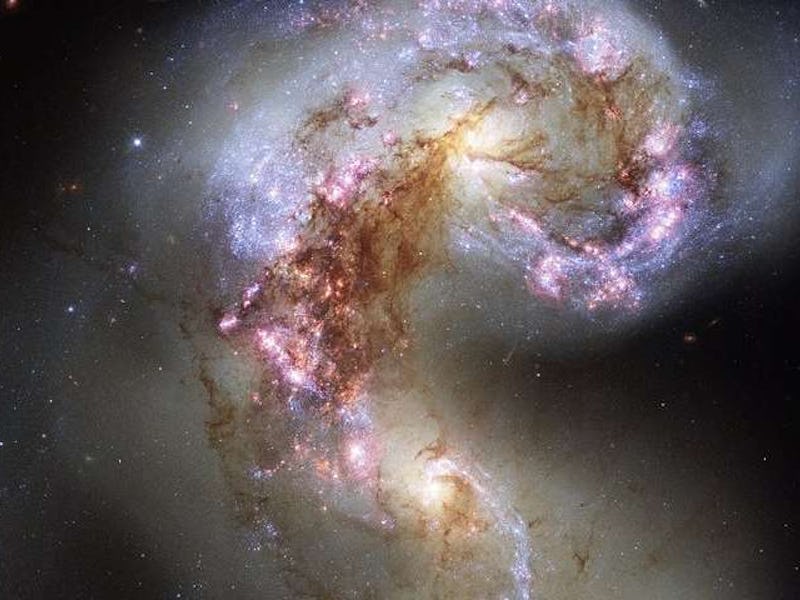
When galaxies collide, a whole mess of activity ensues, including new star formation. But, what scientists had yet to understand was the process behind this formation; how could something be born in such a violent environment? Scientists at the Harvard-Smithsonian Center for Astrophysics have been studying the Antennae Galaxies to answer this question.
The Antennae Galaxies are a pair of interacting galaxies that have been coming together as one for about 900 million years and look like an insect’s antenna because of the long wispy tails of ejected gas and dust protruding from the center of the collision.
Using the ALMA telescope (Atacama Large Millimeter/submillimeter Array), the CfA scientists have discovered that galactic infall of gas and dust may be contributing to the dense star formation in the overlap region of the Antennae, rather than the collision itself.
They discovered this by measuring the emissions in the northern galaxy’s nucleus — which is about 100 times more abundant in gas than the center of the Milky Way — particularly by testing for CN, HCN, HCO+, CH3OH (methanol), and HNCO (isocyanic acid) with ALMA, which uses radio waves to detect the radiation signature of each gas.
For the first time, they found methanol and isocyanic acid were present in the Antennae, and upon further study found that the velocities, ratios, and intensities of these gases were heightened by shocks. The shocks, produced by infall, cause the gas to glow magnificently bright, as seen in the photo, and pick up matter, swirling it all up and forming stars.
This discovery will help scientists understand how galaxies merge and ultimately what factors contribute to their continued survival, despite being in total chaos.
Two galaxies colliding, known as the Antennae.